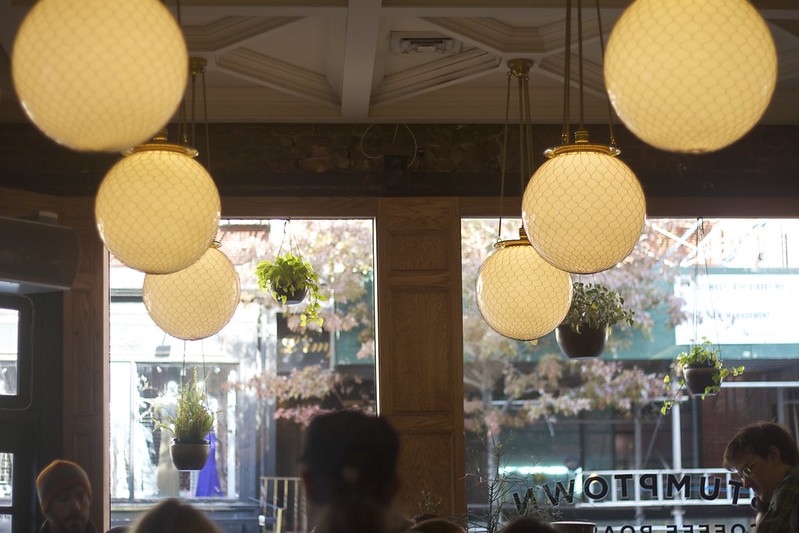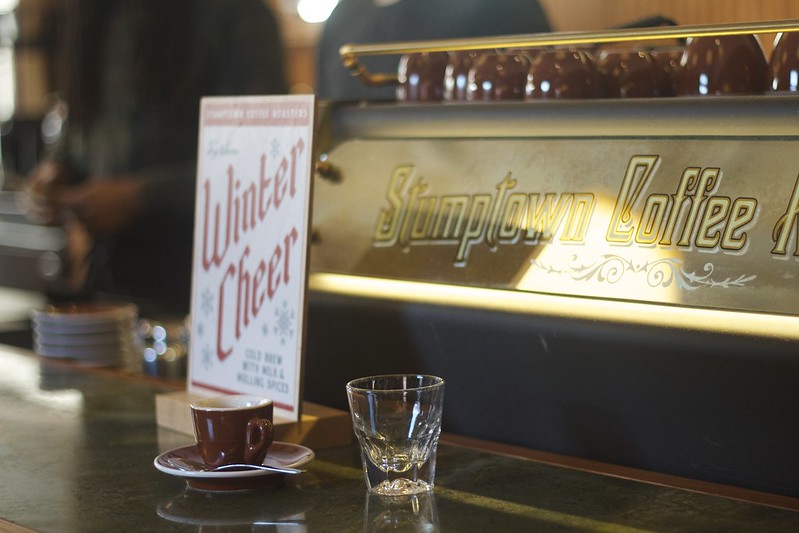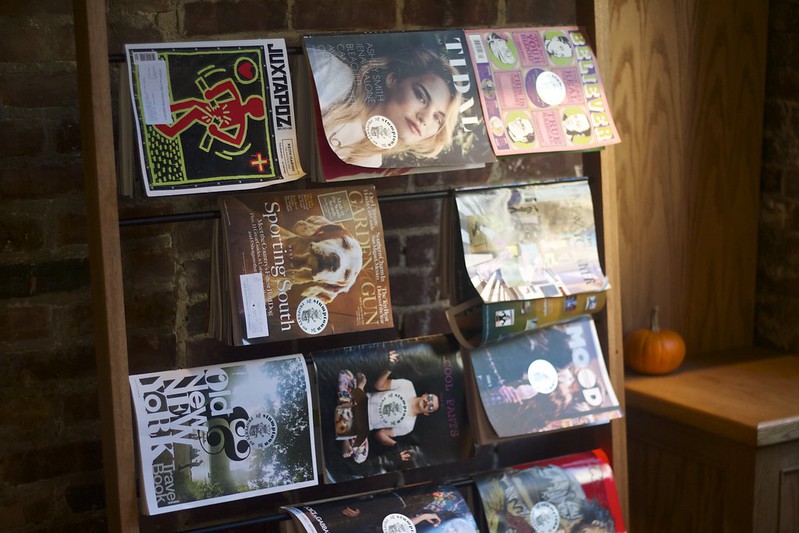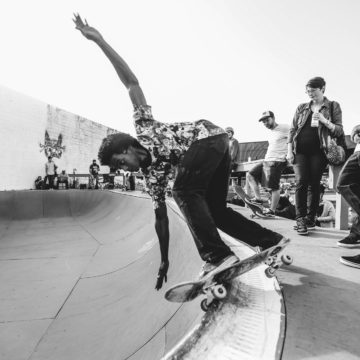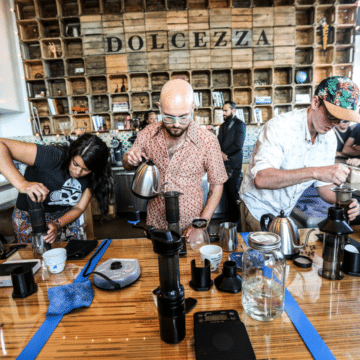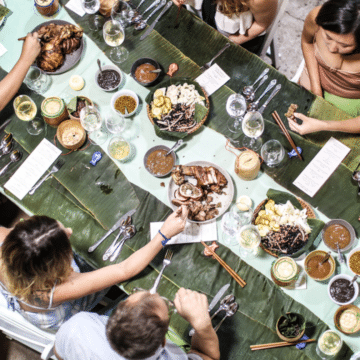Between farmers, dairies, bakers and roasters, Dolcezza has worked with a lot of remarkable, dedicated and passionate people over the years. That’s why we’re starting the Field Trip blog series. It’s a look at some of our friends and collaborators from the inside; a version of them you rarely get to see– a journey to the finished product, if you will. Since winter is starting to settle in, we thought we’d stick with the warmth of coffee and start things off with Stumptown’s Brooklyn roastery.
The Stumptown Coffee Roastery in Red Hook, Brooklyn blends right in with the warehouses that surround it. With the exception of a few windows, it’s pretty unremarkable from the outside. Upon entering, the situation changes instantly. Shelves lined with beans we’ve never seen, stacks of labels, tubs of beans– and this is the most organized part of the space.

Walking into the roasting room, bags and bins of coffee in various phases of the roasting process fill the room, arranged to create walkable paths from point A to point B. The bags come from everywhere– Guatemala, Indonesia, Kenya, Ethiopia– that Stumptown sources from, most direct trade. Drew Caitlin, Stumptown Brooklyn’s head roaster shows us around the almost intimidating room while Pat roasts several batches.
The beans, or rather fruit, are a pale, green-ish yellow before they’re introduced to the Probat roaster. Pat removes samples and smells them consistently to see where they are in the roasting process. We don’t actually witness the roasting– that happens inside of the machine. What we see is the finished product, spinning and cooling evenly, with brushes panning the huge dish to catch any debris.
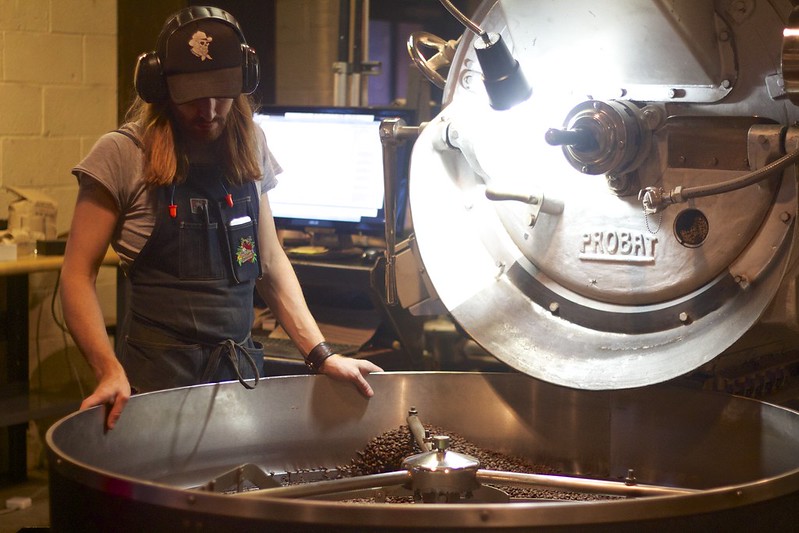

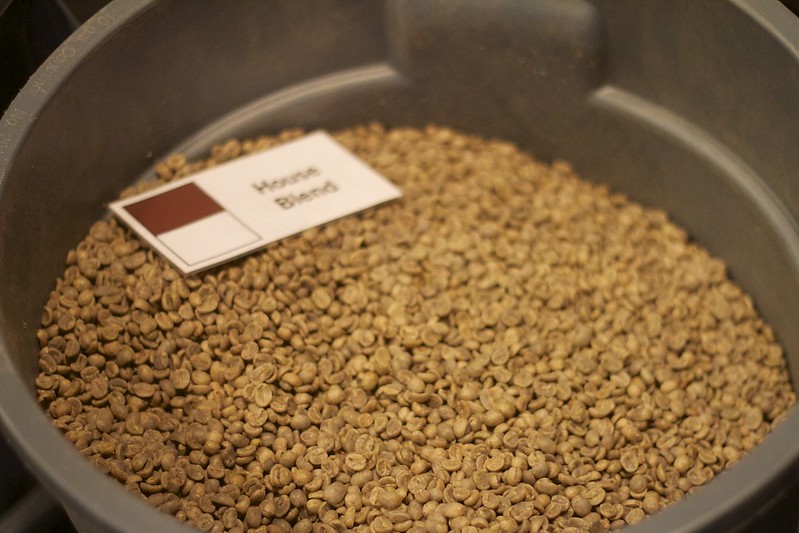
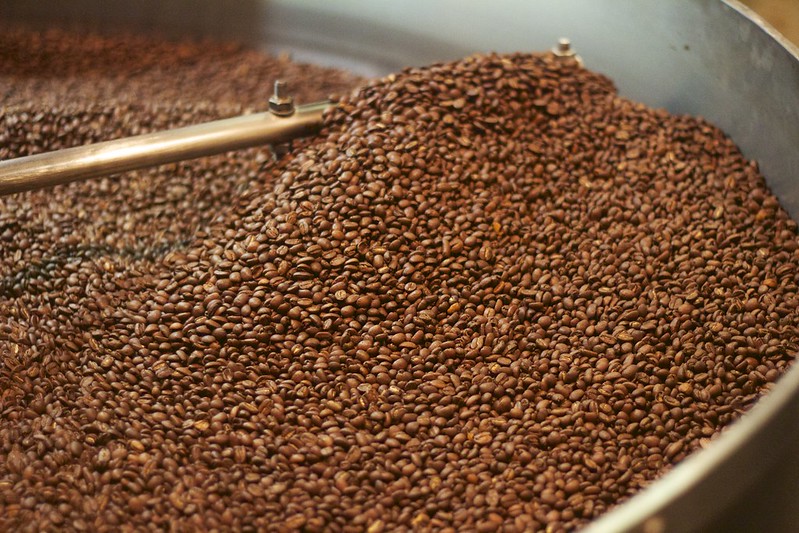
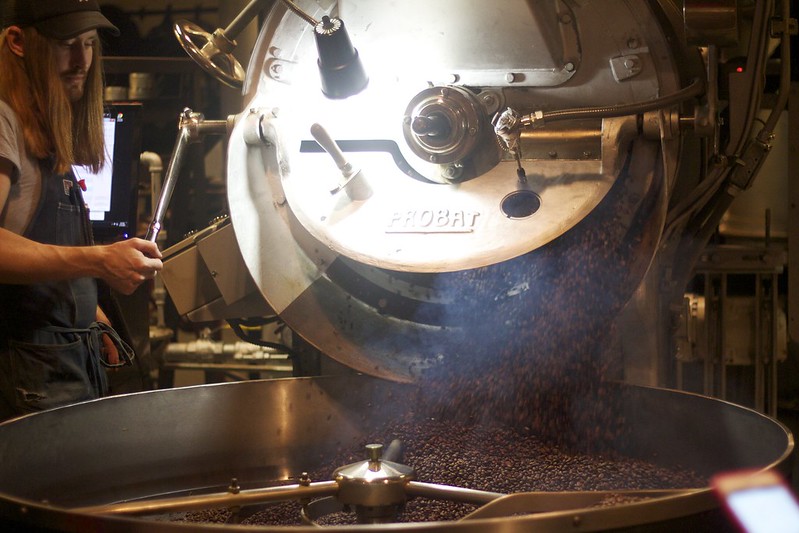
The Stumptown aesthetic runs through the entire building, too– lots of deep wood, warmth, and enough beer for a small army. Cold brew runs on nitro next to a few beer taps, and mini-fridges full of cold brew coffee with milk are just another part of the job.
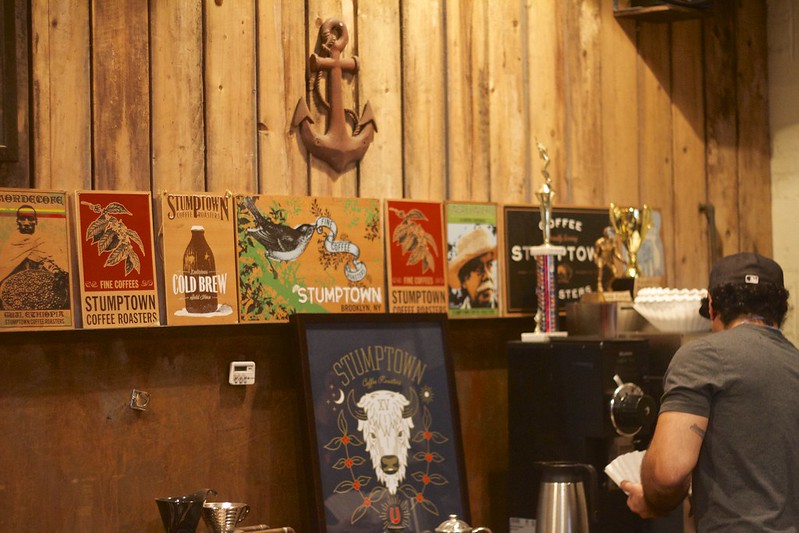
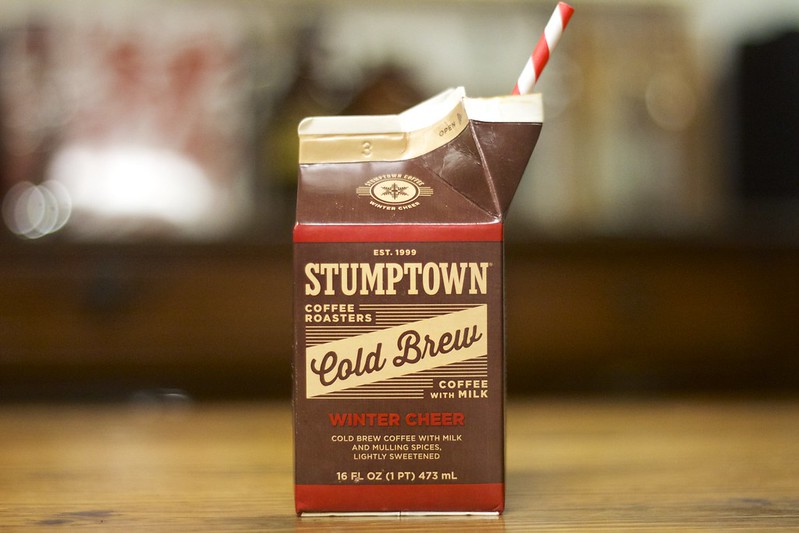
We couldn’t spend hours in the roastery without visiting at least one Stumptown cafe– so we found ourselves on West 8th Street, inside a warm, moody room that reminded us an awful lot of a bookstore. That’s because this particular Stumptown was a book store before it was a cafe– and everything from the library card boxes to the varying wooden tones to the hand-selected books on every shelf worked together to keep that aesthetic alive.
